Mattress Upholstery
February 2022Mattress cover fabrics: which is the best mattress cover?
Updated 2022: This article will give you far more detail about the role of fabrics in mattress covers than the brands will tell you. So you can decide whether paying extra for a fancy mattress cover is really worth it. We aim to give you the basics on what mattress covers are for to make choosing your new mattress that little bit easier.

There will be a big push to pay extra for branded materials to try and reduce this heat issue such as Coolmax and Outlast fabrics. Then there are all the different colours, textures and labels stitched into them. It can become mightily confusing trying to choose a new mattress.
It’s hard to know how much attention to pay to a mattress cover when choosing a new bed. It may be reassuring to know that all mattress covers serve two main purposes. The first is comfort for the user and the second is protection from the sleeper. Let’s look in at more detail
Mattress Covers Explained:
- What is a mattress cover?
- What is the purpose of a mattress cover?
- What types of mattress cover are there?
- What is my mattress cover made of?
- What is the best mattress cover type?
- Are polyester mattress covers ok?
- Are ‘heat reduction’ mattress covers worth it?
- Why you should always use a mattress protector cover
- Eco mattress covers discussed
- Protecting sleepers from dust mites and pests
- How to clean a stained mattress cover
What is a mattress cover?
A mattress cover is any material that encases or covers your mattress. Cheaper mattress covers usually zip on polyester ones that can bobble and warp over time. More high-end mattress covers are tape edged and feature natural fibres such as viscose damask which are more breathable and long-lasting. See the below example of a viscose damask tape edged cover from one of our hand made pocket spring mattresses.
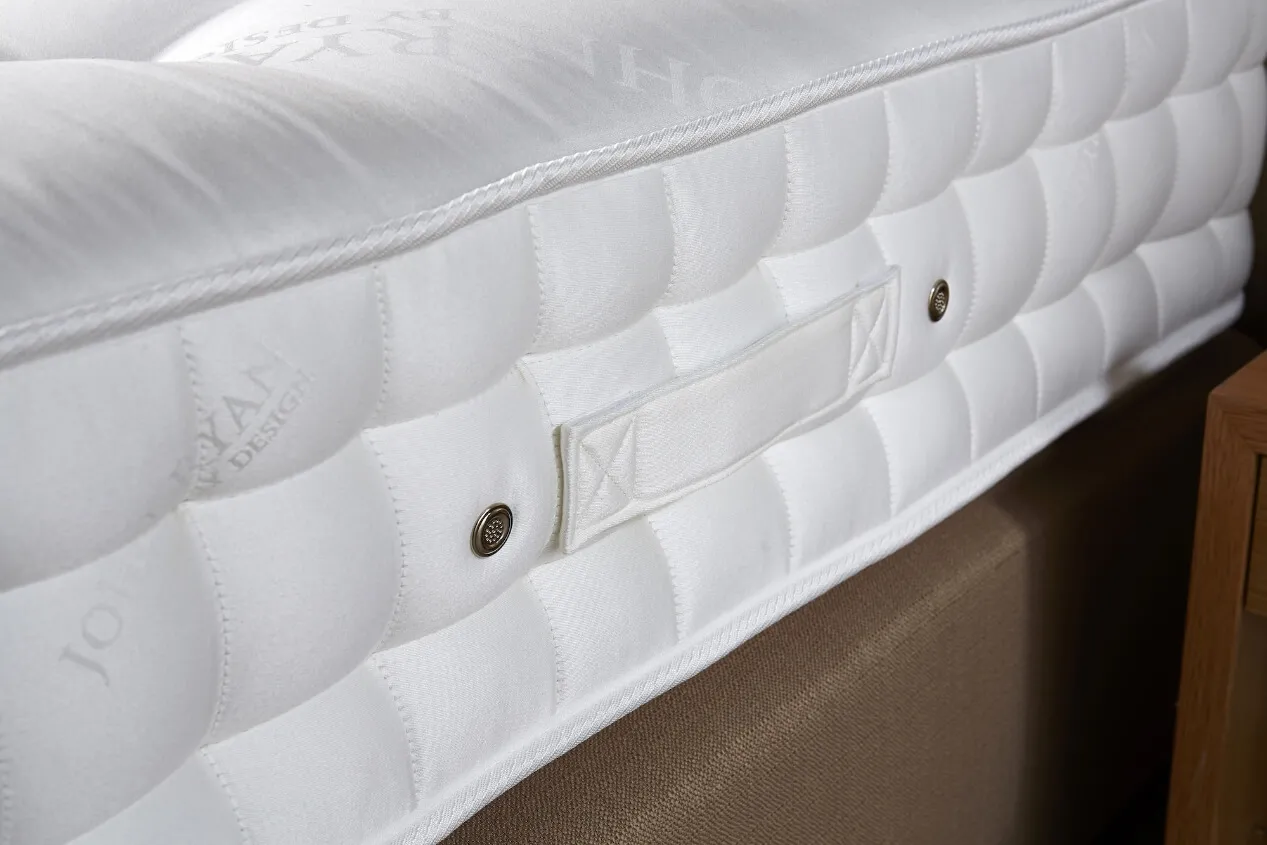
What is the purpose of a mattress cover?
This is the first detail we need to address when it comes to choosing a new mattress. There are two main functions of a mattress cover.
- Comfort
- Protection
All mattress brands out there will be putting their best foot forward when trying to sell a bed. Sadly that’s usually achieved with fancy looking, quilted and often completely synthetic covers. Using luxury terms and branding of ‘the latest innovative fabric technology. However, the main problem is that so much emphasis is put on the cover that the contents of your mattress which provide 95% of the support and comfort are totally overlooked.

1. Comfort
The mattress cover is used as a comfort layer to prevent a sleeper from sleeping directly on top of the foam. Memory foam mattresses usually have a zip on cover that can be removed, unlike traditional pocket sprung mattresses that have a permanent cover that houses the fillings, spring units, and toppings. A tape edged cover is a far higher quality than a zip on cover.
If you didn’t have the cover you would be sleeping directly on top of the foam which has a somewhat rubbery feel to it, like using a foam cushion without a cover on a sofa would feel slightly odd. The cover helps give the mattress a soft and smooth feel. Some covers are quilted to add an extra layer of softness to the mattress.
Sometimes though the quilted covers are just a disguise for a lower quality mattress as they hide a lack of comfort layer fillings inside!
2. Protection
Mattress covers are there to protect the mattress from wear, tear, perspiration, stains and other marks. The fabric cover directly takes the strain that a sleeper may throw at it and not the surface of the foam itself. We must stress though that this protection is the last form of defence; ideally, a mattress protector on top of your topper should be used to prevent damage to the mattress and topper.
However, a decent quality mattress cover can help keep your mattress in top shape for many more years than a cheaper zip on cover.
Covers provide comfort for the sleeper
Covers need to provide protection against sweat and bodily fluids


Mattress Cover Fabric Types & GSM (Grams per square meter)
The depth and grams per square meter (GSM) of the fabric will enable you to assess its quality and density. Opting for a higher GSM fabric usually results in a thicker and higher quality fabric than a lower GSM count. Quite simply there is more of the fabrics material in each square meter the higher the GSM.
Lower GSMs such as 100g will soon flatten and will soon stop providing that additional comfort layer. 100g more often than not feels thin and is slightly transparent. So when out looking at mattresses in retail stores a quick unzip of the mattress cover will enable you to feel the depth and quality.

You can always ask the store though most of the time they probably won’t even know the GSM!
Whilst mattress covers can come in a whole range of materials from cotton, cashmere, Latex and wool, the majority of Memory foam covers are polyester based. Now you may wonder why such a simple synthetic fibre is used so let us review the properties of polyester.
There are 2 main types of mattress cover:
- Quilted or stretch polyester covers (Mattresses up to £1000)
- Damask, Cotton or Natural Fibre covers (Mattresses over £1000)
Quilted covers are nearly always synthetic and made of polyester
Natural viscose covers are more breathable and durable

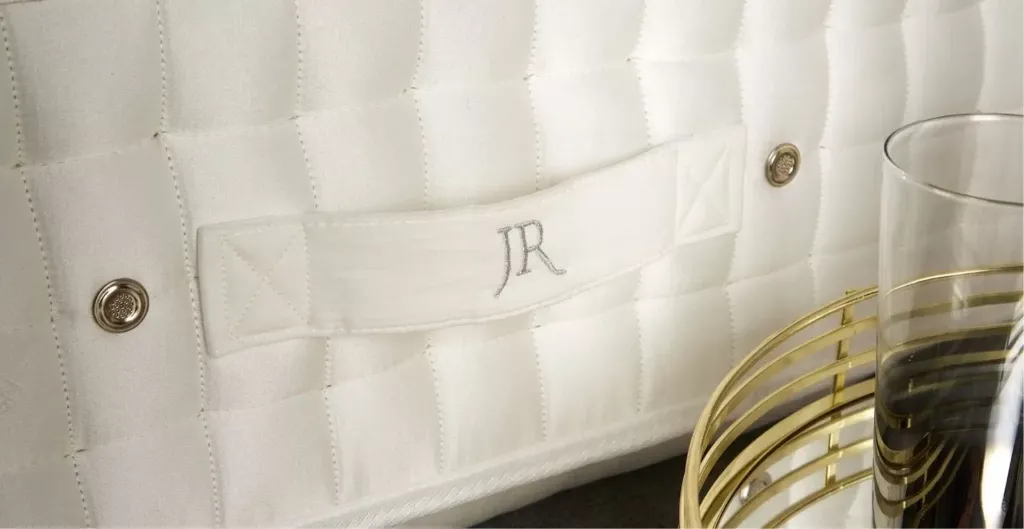
The best Mattress Cover Type is Viscose Damask
When looking for a quality breathable mattress the best option for its cover is a Viscose Damask. This plant-based material is breathable, is woven into a soft touch yet resilient fabric. It doesn’t retain heat like polyester and it will last far longer unlike quilted fabrics which can stretch, bobble or sag in a matter of months.
When looking for a mattress the description should detail what cover fabric is used. You want to be looking for a Viscose Damask. Any other description such as ‘Luxury White Fibre’ or ‘Hypoallergenic mattress covers’ will all be polyester-based which you want to avoid unless you’re looking for an entry-level mattress.
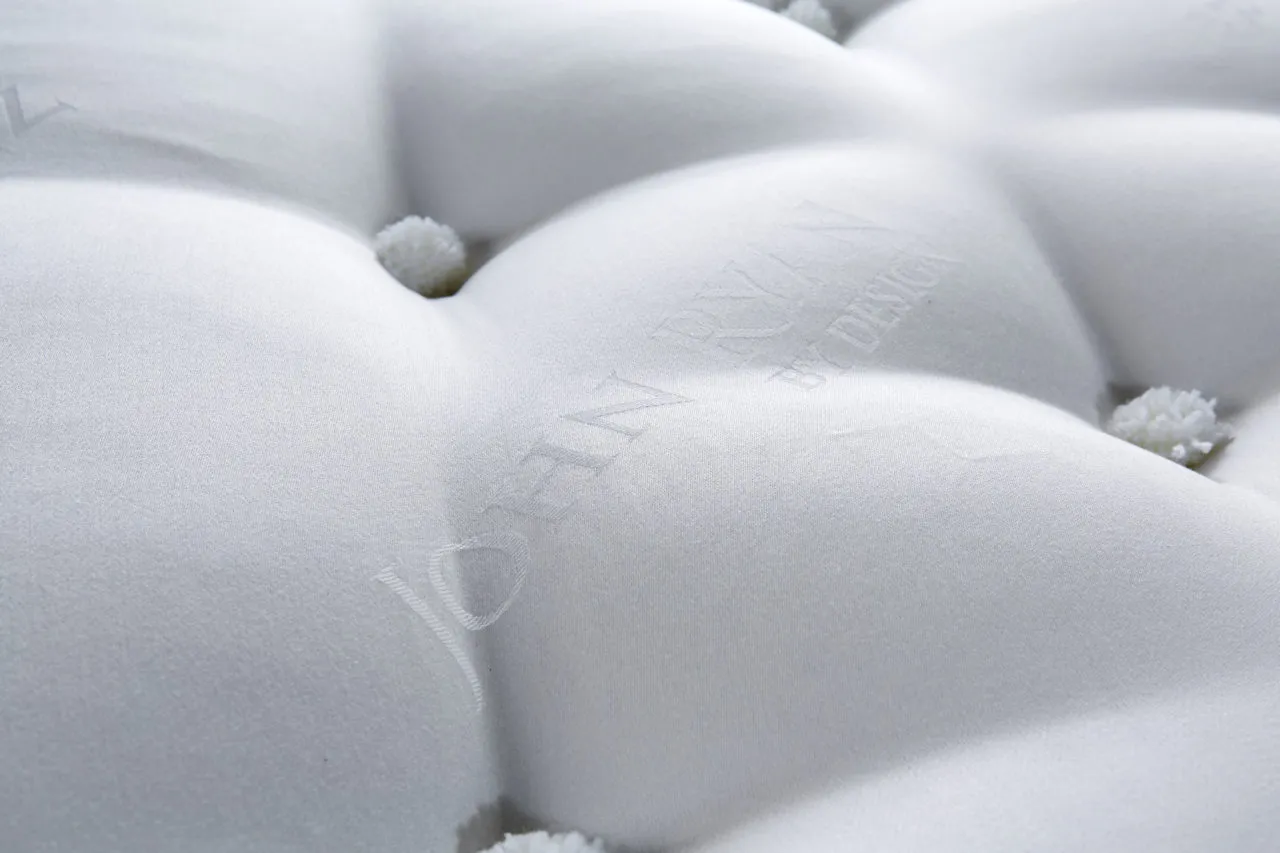
Polyester mattress covers explained
Polyester shouldn’t be completely written off in your search for a new mattress. In fact in mattresses under £1,000 you’re probably not going to get a Viscose damask. Polyester is incredibly useful in entry to midpoint mattress manufacture and is far better than some of the zip on cheap synthetic covers.
- Incredibly durable and strong
- Can be dry cleaned and machine washed at high temperatures without shrinking or warping.
- Quick-drying and moisture repelling
- Returns to its original shape very quickly
Are natural fibres 100% natural? Natural fibres are usually the preferred choice in the mattress industry and a high quality mattress can often be seen to contain high GSM natural components.
That said a number of stretch natural fibres only contain a mere 4% natural fibre with the majority still being polyester.
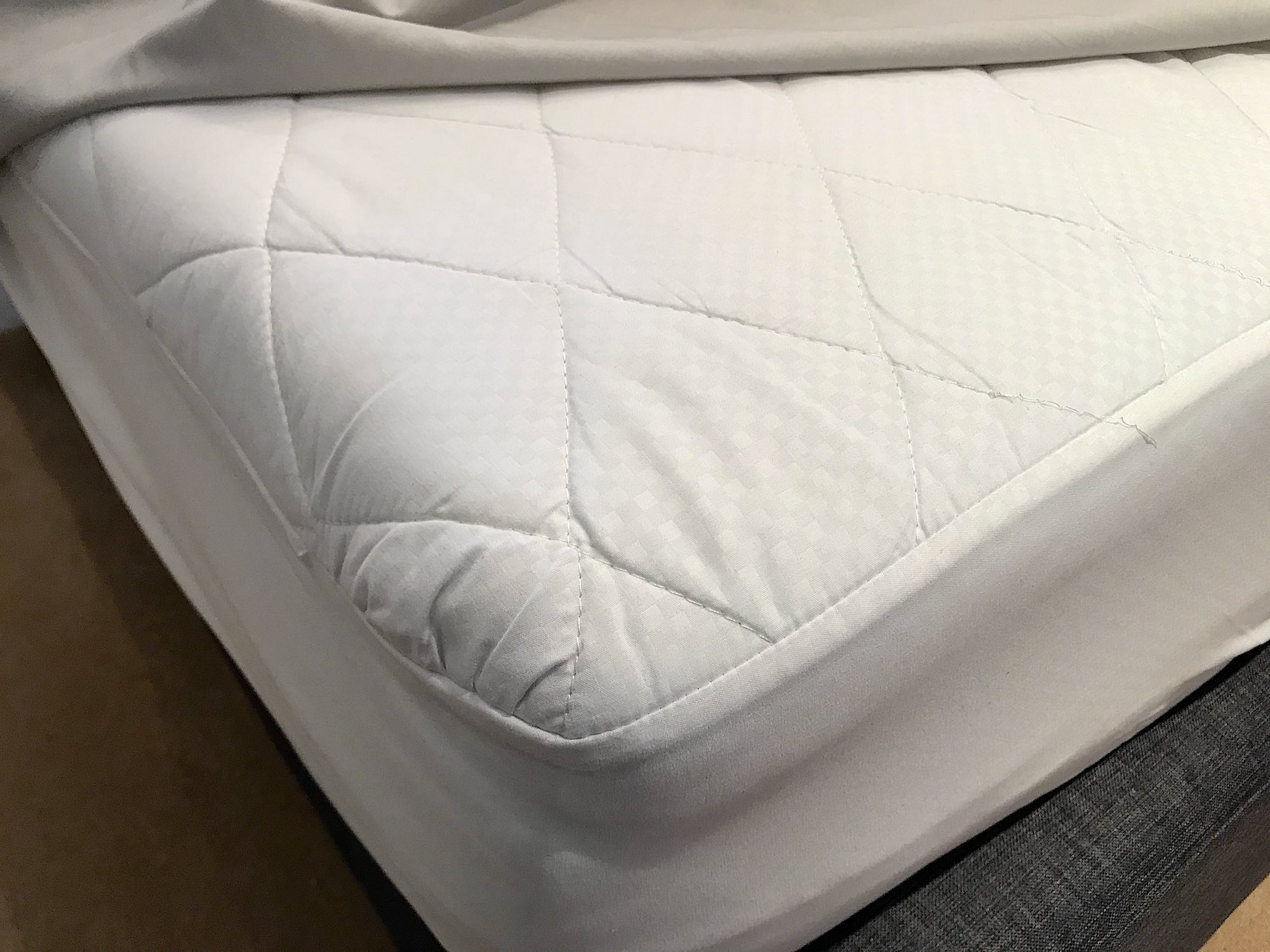
In traditional mattresses, natural materials are always preferable because the construction method of traditional mattresses relies on these fillings to form part of the core mattress. They form layers above the pocket springs and help keep the mattress plush, breathable and keep its shape.
Is the natural fabric really fully natural?
A number of retailers will claim that covers are cotton or cashmere, but upon further inspection looking at the breakdown of the fabric, there is only a tiny proportion of these natural fibres in the mix. In reality, you’re buying a synthetic polyester-based fabric that contains some elements of cotton, cashmere or such. Sometimes this is as low as 4% or 6%. Confusing huh?! There’s more on upholstery here.
Heat-reduction fabrics
Outlast and Coolmax are a high wicking fabrics that claim they can help remove some of the heat issues in memory foam. We have already discussed the heat issue and how we recommend varying the tog of your duvet or alternatively choosing a hybrid foam instead of memory foam.
We think this is a more practical solution than using mattress fabrics to try and remove heat issues. You also need to consider that if you are following the correct mattress maintenance and care you will already have a topper, protector and bedding on top of your mattress.

So ask yourself how a mattress fabric cover is going to benefit you if you have a number of other materials sitting on top of it? Is it worth the extra cost for heat-reduction benefits if it’s buried under other layers?
What mattress cover fabric does John Ryan By Design use?
All our Artisan and Latex models use our John Ryan white viscose damask which has our insignia stitched into it. The Origins range uses a number of different finishes all which can be found in their product listings.
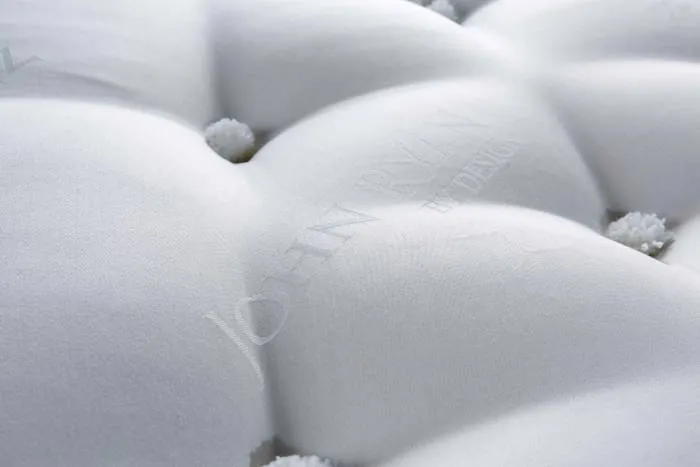
Why you should always use a mattress protector
Mattress protectors should be used with all types of mattresses. From the finest £100,000 Savoir bed to the £400 entry-level mattress model.
Why?
Because a mattress protector is the first line of defence against:
- Sweat
- Odour
- Mattress Damage

Given the fact you can’t remove a mattress cover in most cases, it is essential you help to avoid nasties such as sweat, dead skin and liquids from irreversibly damaging your brand new mattress.
Mattress protectors can cost as little as £10 and can be removed and then washed with your regular mattress maintenance.
A mattress protector should be washed on a 60 degree wash at least once per month.
Eco Mattress Covers Explained
Consideration for the environment is paramount when choosing any new piece of furniture and mattresses are no exception. There is a move to more plant-based mattress fibres as we have demonstrated with our UK first Artisan Latex Vegan mattress.
There are a number of eco mattress zip on covers now available such as:
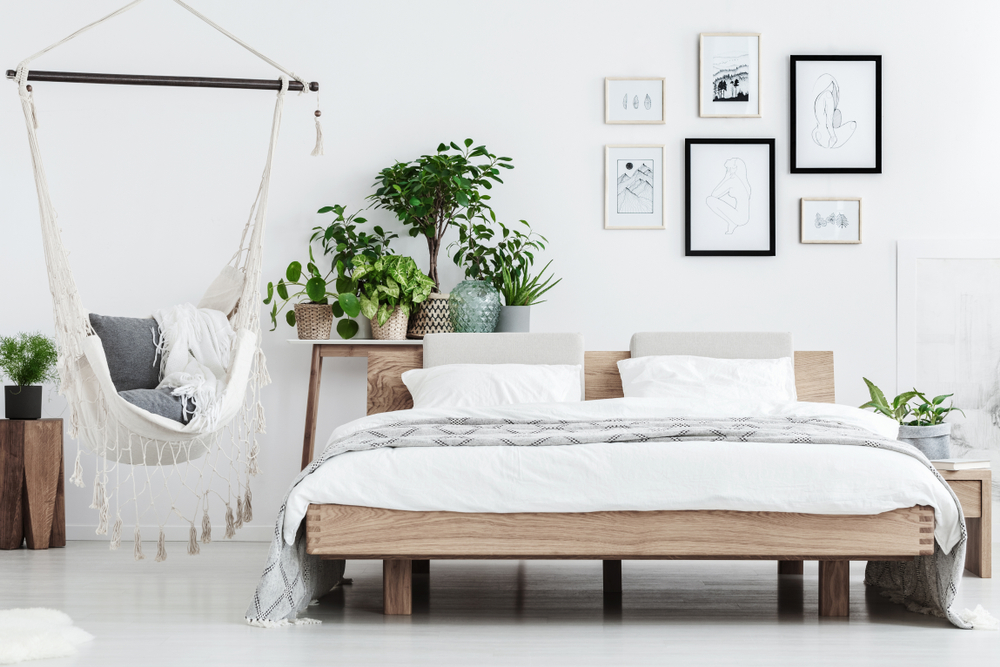
These can help you avoid man-made synthetic polyester covers and choose a more breathable mattress cover. The drawback is the cost. These eco mattress covers usually have a very high price tag and some quite delicate washing instructions if they are removable. For example, pure bamboo tends to bobble and shrink on hotter washes.
So bear in mind that any removable cover or protector needs to be able to be machine washed at a temperature to kill bacteria. One alternative is to choose a 100% cotton bedding set that can be washed at 60 degrees and also avoids plastic-based polyester.
Mattress covers to prevent dust mites
Now that you’ve worked out what kind of mattress cover and protector you need it’s time to consider how to reduce dust mites. These critters can quickly build up in your bedroom without you even noticing them. Dust mites feed off dead skin and other bodily debris. A certain level of dust mites in soft furnishings is acceptable with frequent cleaning and bedroom maintenance.
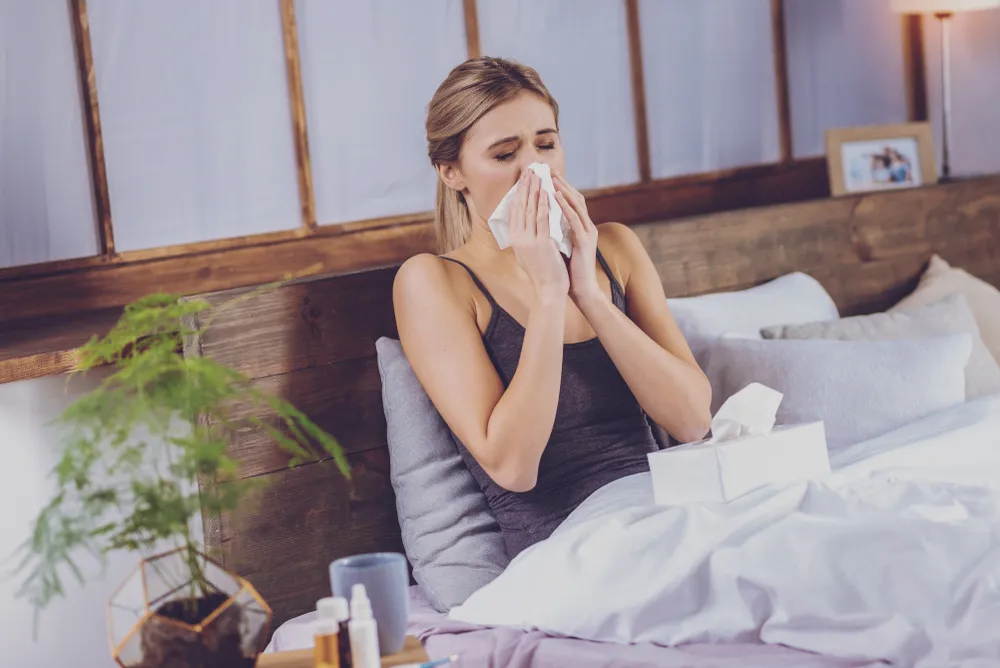
However, if you don’t follow the correct mattress maintenance then dust mites can quickly become a problem especially if you have allergies, asthma or are allergic to dust. As they build up the levels of dust allergens can rise causing poor nights sleep and irritants to sleepers. Many people mistake dust mites with bed bugs which are two different beasts! More on bed bugs here.
To reduce dust mites in the bedroom we recommend:
- Cleaning your bedding on a 60-degree wash once per week including any mattress protector
- Open windows each day to help with bedroom ventilation
- Ensure you vacuum and dust your bedroom weekly
- Avoid letting pets share your bed (or increase your weekly mattress cleaning regime if so!)
- Vacuum your mattress – both sides – once a month
As with any bedroom breathing or skin allergies, it’s important to ensure a consistent cleaning regime and ventilation in the bedroom to help reduce these allergens.
How to clean a stained mattress cover
Whilst mattresses can be cleaned we would always advise that you use a mattress protector in the first place to avoid spills. We also know that sometimes accidents happen and your mattress cover can become stained and unsightly.
If your mattress cover has become stained due to sweat, spilt tea or other accidents then you can follow the instructions below to help remove them:
- Fill a bowl with warm soapy water and another bowl with warm water (no detergent)
- Always use a warm damp cloth with a small amount of detergent (never wet or soaked)
- Sponge the stains in a circular motion
- Rinse the cloth in the second clean bowl to help remove the stains
- For stubborn stains, bicarb of soda can be added as a paste (mix with some water) to help list stubborn stains
- Using a clean cloth then sponge the area to help dry it
- Open a window and leave the mattress to air dry – never be tempted to use a hairdryer it or place it next to a heat source!
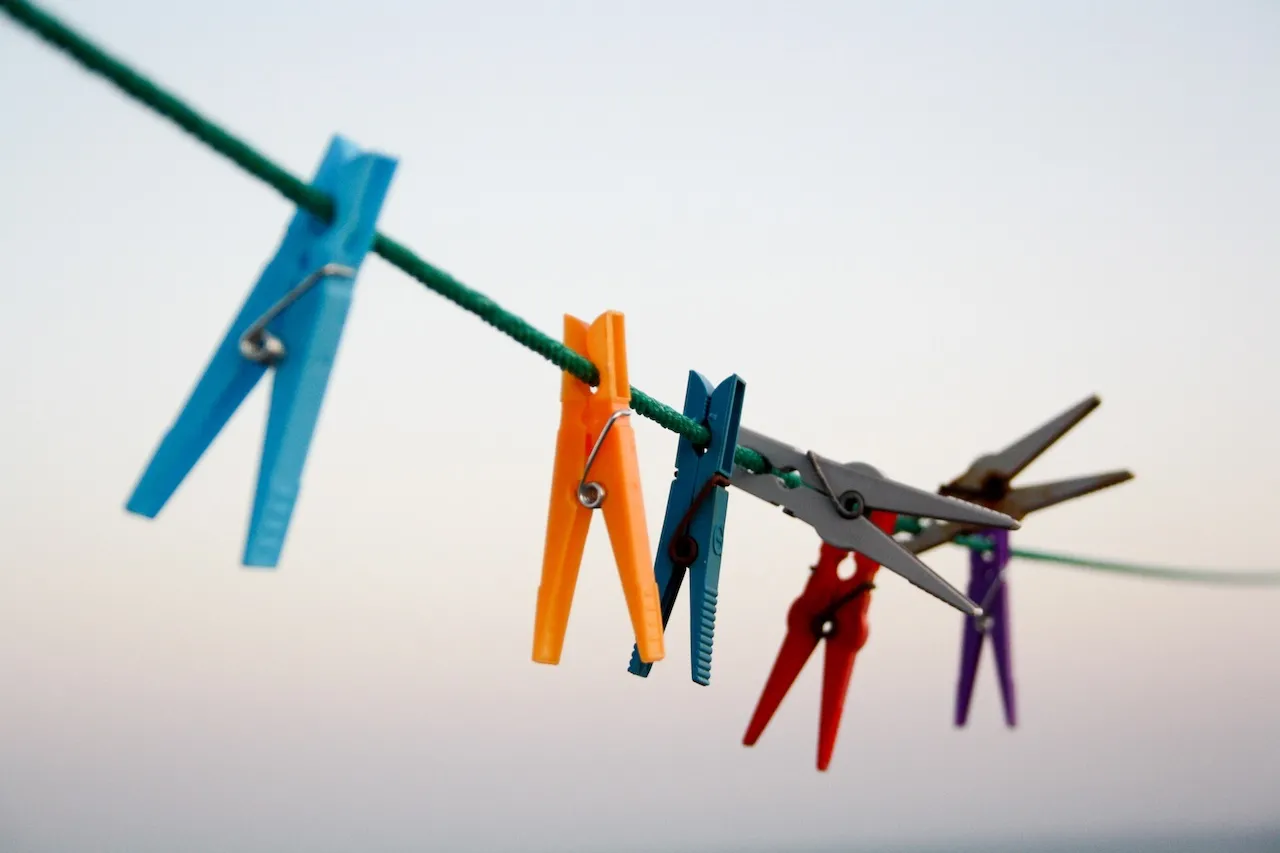
Our recommendation
Mattress covers help provide both comfort and protection. A high-quality viscose damask is probably the best option. Whilst other natural fibres and heat-reducing covers can be interesting often the cost or limited lifespan of them makes them more of a marketing tool than a ‘must-have’ for your mattress.
We believe that you would be better off putting your money into other components of the mattress or high-quality bed linen rather than an ineffective expensively marketted mattress cover.
Need more help or a tailored mattress recommendation? Get in touch with our small team of mattress experts on 0161 437 4419.

Dreaming of the perfect nights sleep?

Ask us a question
There are over 6000 questions and answers submitted by you on all questions about mattresses and bed problems. Enter a keyword such as Vi Spring, John Lewis beds, bad back or Memory Foam and see if your question has already been answered.
If you can’t find an answer in knowledge hub, ask a new question. We aim to respond to all questions within one working day.
Newsletter
Enter your email to join our newsletter. We’ll send you occasional news and mattress expertise.
